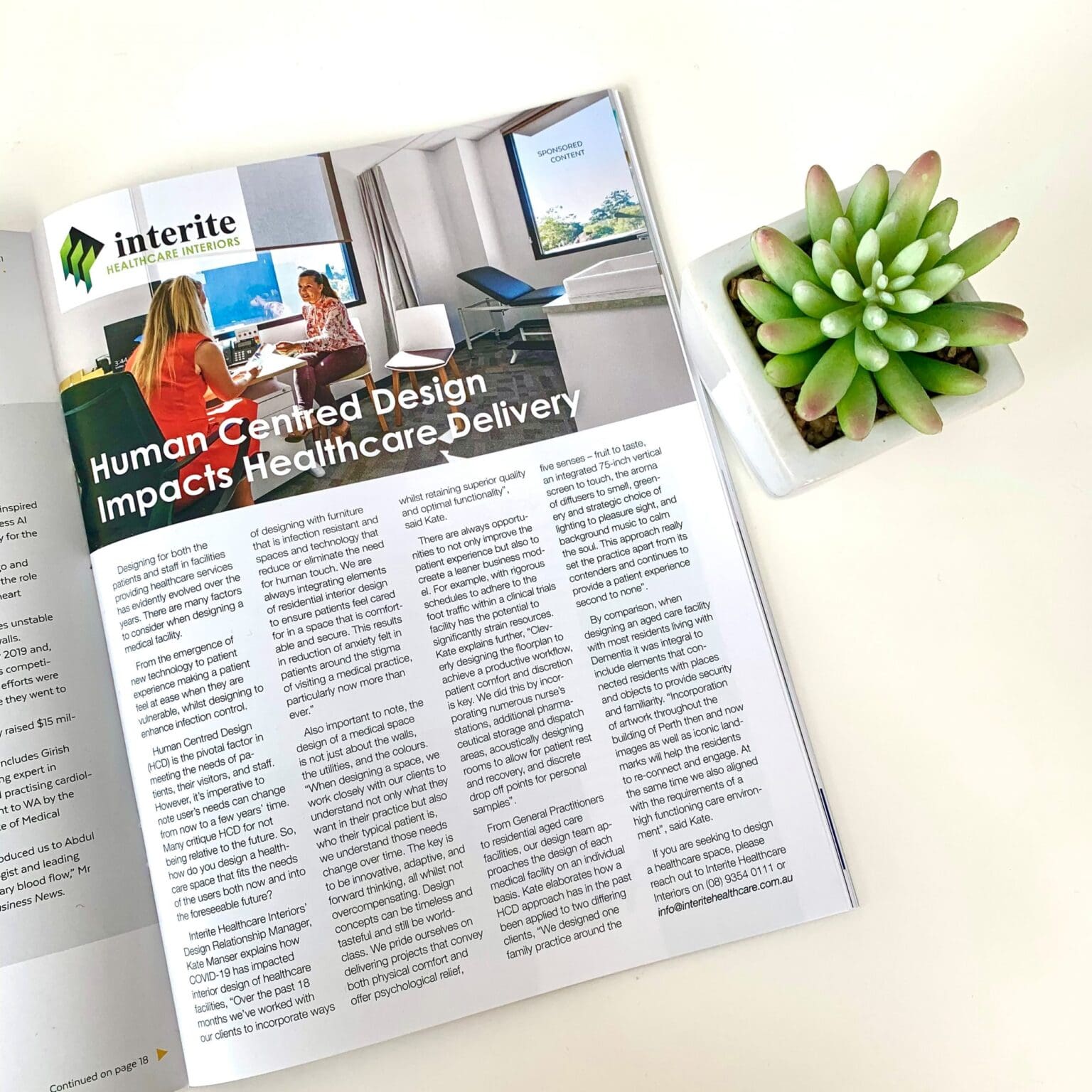Designing for both the patients and staff in facilities providing healthcare services has evidently evolved over the years. There are many factors to consider when designing a medical facility. From the emergence of new technology to patient experience, patients feel at ease when they are vulnerable, whilst designing to enhance infection control.
Human-Centred Design (HCD) is the pivotal factor in meeting the needs of patients, their visitors, and staff. However, it’s imperative to note user’s needs can change from now to a few years’ time. Many critique HCD for not being relative to the future. So, how do you design a healthcare space that fits the needs of the users both now and into the foreseeable future?
Interite Healthcare Interiors’ Design Relationship Manager, Kate Manser explains how COVID-19 has impacted the interior design of healthcare facilities, “Over the past 18 months we’ve worked with our clients to incorporate ways of designing with furniture that is infection resistant and spaces and technology that reduce or eliminate the need for human touch. We are always integrating elements of residential interior design to ensure patients feel cared for in a space that is comfortable and secure. This results in the reduction of anxiety felt in patients around the stigma of visiting a medical practice, particularly now more than ever.”
Also important to note, the design of a medical space is not just about the walls, the utilities, and the colours. “When designing a space, we work closely with our clients to understand not only what they want in their practice but also who their typical patient is, we understand those needs change over time. The key is to be innovative, adaptive, and forward-thinking, all whilst not overcompensating. Design concepts can be timeless and tasteful and still be world-class. We pride ourselves on delivering projects that convey both physical comfort and offer psychological relief, whilst retaining the superior quality and optimal functionality”, said Kate.
There are always opportunities to not only improve the patient experience but also to create a leaner business model. For example, rigorous schedules to adhere to the foot traffic within a clinical trials facility has the potential to significantly strain resources. Kate explains further, “Cleverly designing the floorplan to achieve a productive workflow, patient comfort and discretion is key. We did this by incorporating numerous nurse’s stations, additional pharmaceutical storage and dispatch areas, acoustically designing rooms to allow for patient rest and recovery, and discrete drop off points for personal samples”.
From General Practitioners to residential aged care facilities, our design team approaches the design of each medical facility on an individual basis. Kate elaborates how an HCD approach has in the past been applied to two different clients, “We designed one family practice around the five senses – fruit to taste, an integrated 75-inch vertical screen to touch, the aroma of diffusers to smell, greenery and strategic choice of lighting to pleasure sight, and background music to calm the soul. This approach really set the practice apart from its contenders and continues to provide a patient experience second to none”.
By comparison, when designing an aged care facility with most residents living with Dementia it was integral to include elements that connected residents with places and objects to provide security and familiarity. “Incorporation of artwork throughout the building of Perth then and now images, as well as iconic landmarks, will help the residents to re-connect and engage. At the same time we also aligned with the requirements of a high functioning care environment”, said Kate.
If you are seeking to design a healthcare space, please reach out to Interite Healthcare Interiors on (08) 9354 0111 or [email protected].
